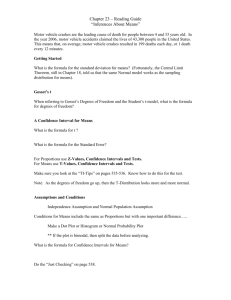D:\Courses\Math 1730\nonlinear inequalities.wpd
advertisement
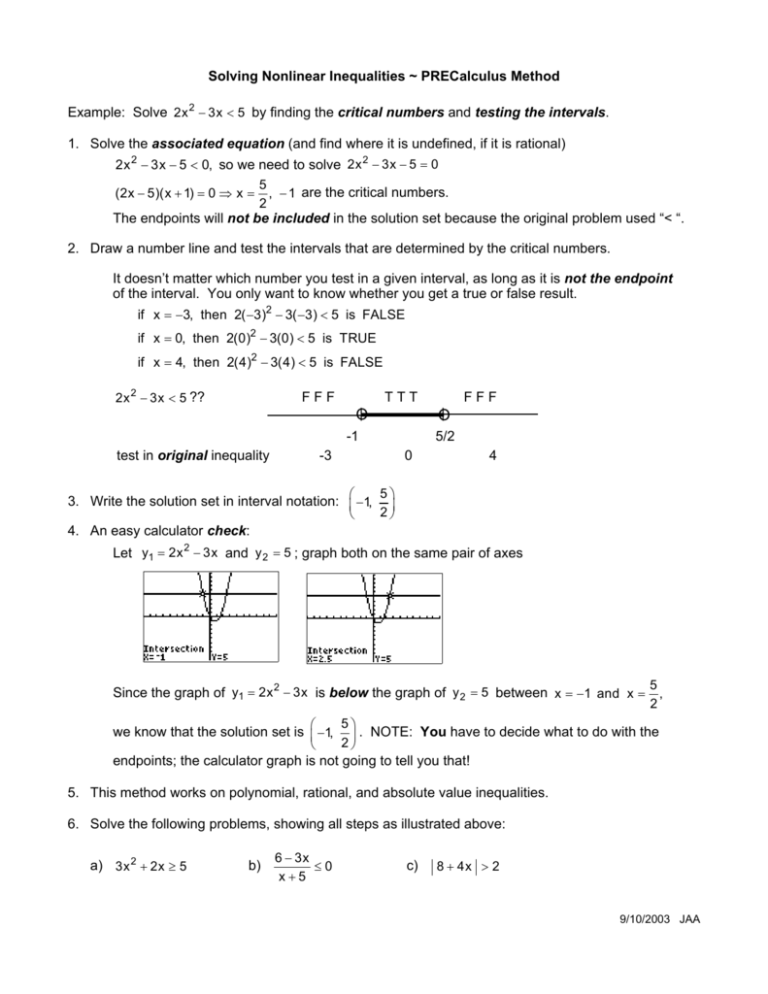
Solving Nonlinear Inequalities ~ PRECalculus Method Example: Solve 2x 2 − 3x < 5 by finding the critical numbers and testing the intervals. 1. Solve the associated equation (and find where it is undefined, if it is rational) 2x 2 − 3x − 5 < 0, so we need to solve 2x 2 − 3x − 5 = 0 5 (2x − 5)(x + 1) = 0 ⇒ x = , − 1 are the critical numbers. 2 The endpoints will not be included in the solution set because the original problem used “< “. 2. Draw a number line and test the intervals that are determined by the critical numbers. It doesn’t matter which number you test in a given interval, as long as it is not the endpoint of the interval. You only want to know whether you get a true or false result. if x = −3, then 2( −3)2 − 3( −3) < 5 is FALSE if x = 0, then 2(0)2 − 3(0) < 5 is TRUE if x = 4, then 2(4)2 − 3(4) < 5 is FALSE 2x 2 − 3x < 5 ?? FFF TTT | O -1 test in original inequality -3 FFF | O 5/2 0 4 5 3. Write the solution set in interval notation: −1, 2 4. An easy calculator check: Let y1 = 2x 2 − 3x and y 2 = 5 ; graph both on the same pair of axes y 1 = 2 x 2 − 3 x − 5 Since the graph of y1 = 2x 2 − 3x is below the graph of y 2 = 5 between x = −1 and x = 5 , 2 5 we know that the solution set is −1, . NOTE: You have to decide what to do with the 2 endpoints; the calculator graph is not going to tell you that! 5. This method works on polynomial, rational, and absolute value inequalities. 6. Solve the following problems, showing all steps as illustrated above: a) 3x 2 + 2x ≥ 5 b) 6 − 3x ≤0 x+5 c) 8 + 4x > 2 9/10/2003 JAA


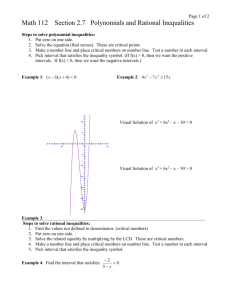
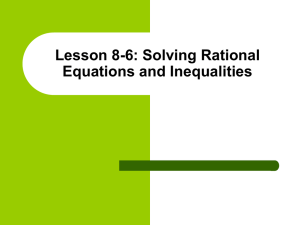

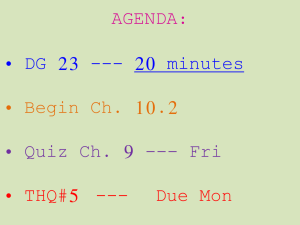


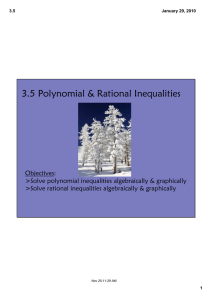

![The Average rate of change of a function over an interval [a,b]](http://s3.studylib.net/store/data/005847252_1-7192c992341161b16cb22365719c0b30-300x300.png)
